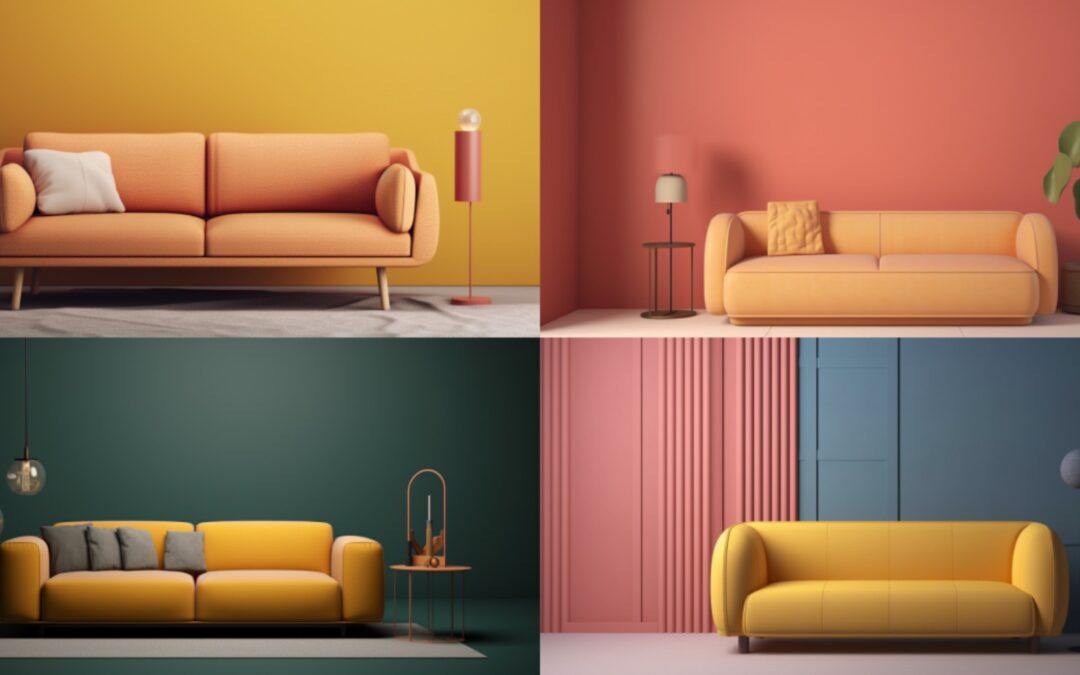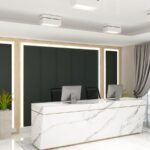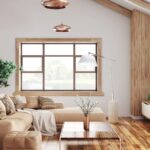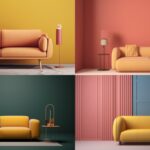Office furniture is a crucial element of productivity and employee satisfaction, especially in the dynamic workplace environment. This article examines the transformative power of smart office furniture and examines the impact of technology integration, ergonomic design, and collaboration promotion on workplace effectiveness.
Introduction
Modern furniture design represents the forefront of aesthetic innovation and functional sophistication, characterized by sleek lines, minimalism, and an embrace of contemporary materials. This design philosophy seeks not only to fulfill the practical demands of today’s lifestyles but also to infuse spaces with a sense of order and tranquility. Central to this approach is the strategic use of color, which transcends mere decoration to significantly influence the ambiance and emotional tone of a space. By carefully selecting hues that evoke specific psychological responses, modern furniture design employs color as a vital tool in crafting environments that are visually appealing, emotionally resonant, and tailored to the needs and well-being of its inhabitants.
The importance of color in shaping the atmosphere and style of a room is profound. It has the power to transform a simple area into a vibrant sanctuary of style and comfort, affecting not just the aesthetic charm of the furniture but also the mood of the entire space. Colors can energize, calm, uplift, or inspire, playing a critical role in creating the desired ambiance. This thoughtful application of color in modern furniture design allows for the creation of spaces that are not only functional and stylish but also deeply aligned with the emotional and psychological needs of those who inhabit them, making our living spaces true reflections of ourselves.
This blog will guide you through the latest color trends in modern furniture, showing you how colors can make your home look and feel great.
Color Theory and Psychology
Color theory provides a crucial lens through which we understand the interaction and visual effects of colors, as well as their influence on human perception. In the domain of furniture design, the application of color theory transcends aesthetic appeal to forge a deep emotional resonance. Warm colors, for instance, are known to evoke feelings of warmth and comfort, making them ideal for living room furnishings where a welcoming atmosphere is desired. On the other end of the spectrum, cool colors can instill a sense of calm and serenity, making them perfect for bedroom settings where relaxation is paramount. This nuanced interplay between color and emotion underscores the vital role of interior color psychology, highlighting how strategic color choices can transform a space not just visually, but also emotionally, fostering environments that resonate with the inhabitants’ feelings and moods.
Current Color Trends in Furniture Design
The palette of modern furniture design is continually evolving, reflecting broader societal trends and individual preferences. Currently, there is a notable shift towards embracing earthy tones, pastels, and bold jewel tones.
These trends signify more than just a fleeting fashion; they represent a collective movement towards colors that reflect contemporary values such as sustainability, mindfulness, and personal expression. Earthy tones, for example, ground us to nature and embody a sense of tranquility and stability. Pastels offer a soft, calming presence, conducive to spaces meant for relaxation and contemplation. Bold jewel tones, with their depth and vibrancy, inject energy and character into modern interiors, making a statement of luxury and boldness. This evolution in color preferences marks a significant departure from traditional color schemes, embracing a more eclectic and personalized approach that caters to the unique tastes and lifestyles of today’s individuals.
Impact of Color Trends on Furniture Selection
The influence of current color trends on consumer behavior and furniture selection is profound. Today’s shoppers are drawn to furniture pieces that not only align with their personal aesthetic preferences but also resonate with contemporary design trends, with color serving as a key determinant in their choice. A sofa in a deep blue or a terracotta accent chair is not merely a functional item but a statement piece that adds personality and flair to a room. This shift towards color-conscious purchasing reflects the increasing importance of interior design in everyday life, highlighting how color psychology and aesthetic preferences are shaping the modern interior landscape.
Case Studies
The strategic use of color in furniture design can be illustrated through various case studies. For instance, consider a minimalist sofa that adopts the latest trend of incorporating muted greens and blues, demonstrating how modern furniture can embrace contemporary color trends to enhance both the design appeal and the emotional resonance of the piece. Similarly, the resurgence of vibrant yellows in accent pieces serves to inject a sense of energy and optimism into modern interiors, showcasing how the thoughtful application of color can transform the ambiance of a space. These examples highlight how designers and manufacturers are leveraging color trends to create furniture that is not only aesthetically pleasing but also emotionally engaging, catering to the evolving tastes and needs of contemporary consumers.
Customization and Personalization
The increasing demand for customizable furniture options reflects a broader trend towards personalization in interior design. Consumers now more than ever seek the ability to tailor furniture pieces to their specific preferences, particularly in terms of color and finish, to create spaces that truly reflect their individual style and personality. This trend towards customization and personalization signifies a departure from one-size-fits-all solutions, embracing instead a more individualized approach to living spaces that highlights unique tastes and lifestyles. As the furniture industry continues to evolve, offering customizable options in terms of colors and finishes becomes a critical aspect of attracting and retaining customers, further emphasizing the importance of color in modern furniture design.
Conclusion
The examination of modern furniture design highlights the significant impact of color on our living environments, seamlessly merging aesthetics with emotion. Beyond mere decoration, color embodies individual style and meets practical requirements. As the industry progresses, grasping color trends and their psychological influences becomes essential for creating meaningful spaces.
TradeGully, committed to facilitating expansion and transformation, draws upon its expertise to craft environments that reflect these evolving trends. From civil works to furniture, we offer comprehensive solutions for various spaces. We encourage you to explore how color can redefine the essence of your surroundings. For a fresh perspective on modern furniture design, connect with TradeGully and discover the potential of color in crafting emotionally resonant and visually captivating spaces.






